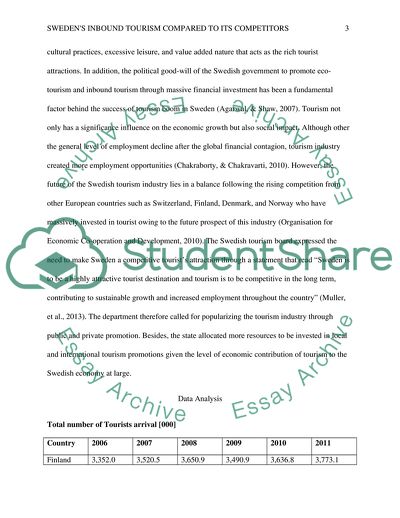Cite this document
(Sweden's Inbound Tourism Compared to Its Competitors Statistics Project Example | Topics and Well Written Essays - 1750 words, n.d.)
Sweden's Inbound Tourism Compared to Its Competitors Statistics Project Example | Topics and Well Written Essays - 1750 words. https://studentshare.org/tourism/1797397-swedens-inbound-tourism-compared-to-its-competitors
Sweden's Inbound Tourism Compared to Its Competitors Statistics Project Example | Topics and Well Written Essays - 1750 words. https://studentshare.org/tourism/1797397-swedens-inbound-tourism-compared-to-its-competitors
(Sweden'S Inbound Tourism Compared to Its Competitors Statistics Project Example | Topics and Well Written Essays - 1750 Words)
Sweden'S Inbound Tourism Compared to Its Competitors Statistics Project Example | Topics and Well Written Essays - 1750 Words. https://studentshare.org/tourism/1797397-swedens-inbound-tourism-compared-to-its-competitors.
Sweden'S Inbound Tourism Compared to Its Competitors Statistics Project Example | Topics and Well Written Essays - 1750 Words. https://studentshare.org/tourism/1797397-swedens-inbound-tourism-compared-to-its-competitors.
“Sweden'S Inbound Tourism Compared to Its Competitors Statistics Project Example | Topics and Well Written Essays - 1750 Words”. https://studentshare.org/tourism/1797397-swedens-inbound-tourism-compared-to-its-competitors.


